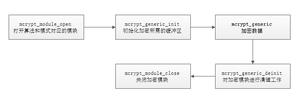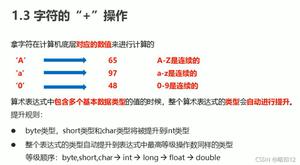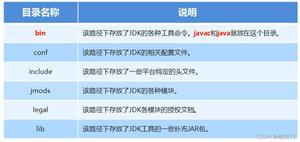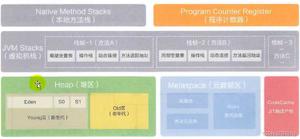JAVA加密算法实密钥一致协议代码示例
密钥一致协议是由公开密钥密码体制的奠基人 Diffie 和 Hellman 所提出的一种思想。
代表:指数密钥一致协议 (Exponential Key Agreement Protocol)
使用流程介绍:
甲方构建密钥对,将公钥公布给乙方,将私钥保留;双方约定数据加密算法;乙方通过甲方公钥构建密钥对,将公钥公布给甲方,将私钥保留。
甲方使用私钥、乙方公钥、约定数据加密算法构建本地密钥,然后通过本地密钥加密数据,发送给乙方加密后的数据;乙方使用私钥、甲方公钥、约定数据加密算法构建本地密钥,然后通过本地密钥对数据解密。
乙方使用私钥、甲方公钥、约定数据加密算法构建本地密钥,然后通过本地密钥加密数据,发送给甲方加密后的数据;甲方使用私钥、乙方公钥、约定数据加密算法构建本地密钥,然后通过本地密钥对数据解密。
不单单是甲乙双方两方,可以扩展为多方共享数据通讯,这样就完成了网络交互数据的安全通讯!
参考示例:
package test;
import java.security.KeyFactory;
import java.security.KeyPair;
import java.security.KeyPairGenerator;
import java.security.PublicKey;
import java.security.Security;
import java.security.spec.X509EncodedKeySpec;
import javax.crypto.Cipher;
import javax.crypto.KeyAgreement;
import javax.crypto.SecretKey;
import javax.crypto.interfaces.DHPublicKey;
import javax.crypto.spec.DHParameterSpec;
public class DHKey {
public static void main(String argv[]) {
try {
DHKey my = new DHKey();
my.run();
} catch (Exception e) {
System.err.println(e);
}
}
private void run() throws Exception {
// A 构建密钥对,公钥给B
Security.addProvider(new com.sun.crypto.provider.SunJCE());
KeyPairGenerator aliceKpairGen = KeyPairGenerator.getInstance("DH");
aliceKpairGen.initialize(512);
KeyPair aliceKpair = aliceKpairGen.generateKeyPair();
byte[] alicePubKeyEnc = aliceKpair.getPublic().getEncoded(); // 公开密钥
// B 根据A的公钥构建自己的密钥对,同时把自己生成的公钥给A,通过A的公钥和自己的私钥构建DES的密钥
KeyFactory bobKeyFac = KeyFactory.getInstance("DH");
X509EncodedKeySpec x509KeySpec = new X509EncodedKeySpec(alicePubKeyEnc);
PublicKey alicePubKey = bobKeyFac.generatePublic(x509KeySpec);
DHParameterSpec dhParamSpec = ((DHPublicKey) alicePubKey).getParams();
KeyPairGenerator bobKpairGen = KeyPairGenerator.getInstance("DH");
bobKpairGen.initialize(dhParamSpec);
KeyPair bobKpair = bobKpairGen.generateKeyPair();
KeyAgreement bobKeyAgree = KeyAgreement.getInstance("DH");
bobKeyAgree.init(bobKpair.getPrivate());
bobKeyAgree.doPhase(alicePubKey, true);
SecretKey bobDesKey = bobKeyAgree.generateSecret("DES");
byte[] bobPubKeyEnc = bobKpair.getPublic().getEncoded();
// A 通过本地密钥和A的公钥构建DES密钥,这里还做一个验证
KeyFactory aliceKeyFac = KeyFactory.getInstance("DH");
x509KeySpec = new X509EncodedKeySpec(bobPubKeyEnc);
PublicKey bobPubKey = aliceKeyFac.generatePublic(x509KeySpec);
KeyAgreement aliceKeyAgree = KeyAgreement.getInstance("DH");
aliceKeyAgree.init(aliceKpair.getPrivate()); // 秘密密钥
aliceKeyAgree.doPhase(bobPubKey, true);
SecretKey aliceDesKey = aliceKeyAgree.generateSecret("DES");
if (aliceDesKey.equals(bobDesKey))
System.out.println("A 和 B 的公钥 相同");
else
System.out.println("A 和 B 的公钥 不同");
// B 通过密钥加密数据
Cipher bobCipher = Cipher.getInstance("DES");
bobCipher.init(Cipher.ENCRYPT_MODE, bobDesKey);
String bobinfo = "这是B的机密信息";
System.out.println("B 加密前原文 :" + bobinfo);
byte[] cleartext = bobinfo.getBytes();
byte[] ciphertext = bobCipher.doFinal(cleartext);
// A 通过密钥解密数据
Cipher aliceCipher = Cipher.getInstance("DES");
aliceCipher.init(Cipher.DECRYPT_MODE, aliceDesKey);
byte[] recovered = aliceCipher.doFinal(ciphertext);
System.out.println("A解密 B 的信息 :" + (new String(recovered)));
}
}
以上是 JAVA加密算法实密钥一致协议代码示例 的全部内容, 来源链接: utcz.com/z/332056.html







